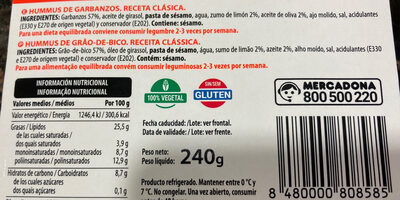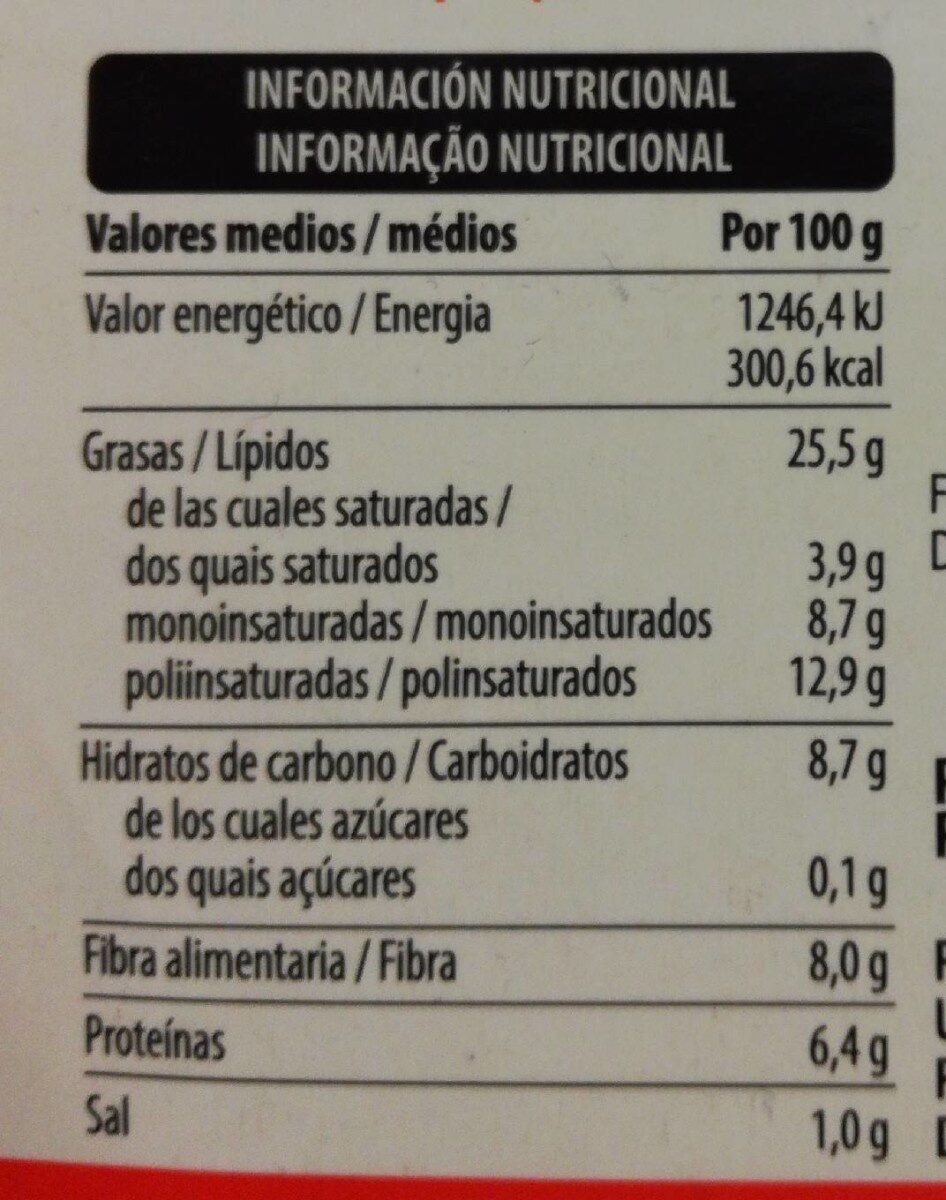Hummus de garbanzos receta clásica - Hacendado - 240 g
Aquesta pàgina del producte no està completa. Podeu ajudar a completar-la editant-la i afegint-hi més dades a partir de les fotos ja disponibles, o fent-ne més amb l'aplicació de androide o iPhone / iPad. Gràcies!
×
Codi de barres: 8480000808585 (EAN / EAN-13)
Nom comú: Hummus de garbanzos. Receta clásica
Quantitat: 240 g
Empaquetament: Plàstic, en:container, en:Refrigerated, en:Tarrina
Marques: Hacendado
Categories: Aliments i begudes amb base vegetal, Aliments amb base vegetal, Condiments, Productes per untar, Productes amb base vegetal per untar, Productes salats per untar, Salses, en:Dips, Hummus, en:Classic hummus, en:Groceries
Etiquetes, certificacions, premis:
Lliure de gluten, Vegetarià, Source of fibre, Vegà, Punt verd, Alt en fibra
Llocs de fabricació o processament: España
Codi de traçabilitat: ES 26.08644/B CE
Matching with your preferences
Entorn
Petjada de carboni
Empaquetament
Transport
Report a problem
Fonts de dades
Producte afegit per date-limite-app
Última modificació de la pàgina del producte per jorgeyp.
La pàgina del producte, també editada per ecoscore-impact-estimator, foodless, foodvisor, inf, kiliweb, luiszama, moon-rabbit, neptuno, off.69dc0b19-2bbf-4697-b090-a29f02997597, openfoodfacts-contributors, packbot, roboto-app, scanbot, sergiorc91, stevek, tacite-mass-editor, teolemon, thaialagata, yuka.V0tZdEt2Z1F0OXdia2ZNUG9BM0owZFo0eGI3MlFtK29KYk1RSWc9PQ, yuka.WUxnTlNhbGRwdm92dThNM29nSE0vL054NDQzMERVM3NKYkF0SVE9PQ, yuka.ZXB3SkRxa1JoOGs3a2Zadjdrdjd4ZHNveElDRVVUbUdCYkFBSVE9PQ, yuka.sY2b0xO6T85zoF3NwEKvlhBqCsDfpCzmGw7VmG7X7-iwL5LTOsMo26ugE6o.











